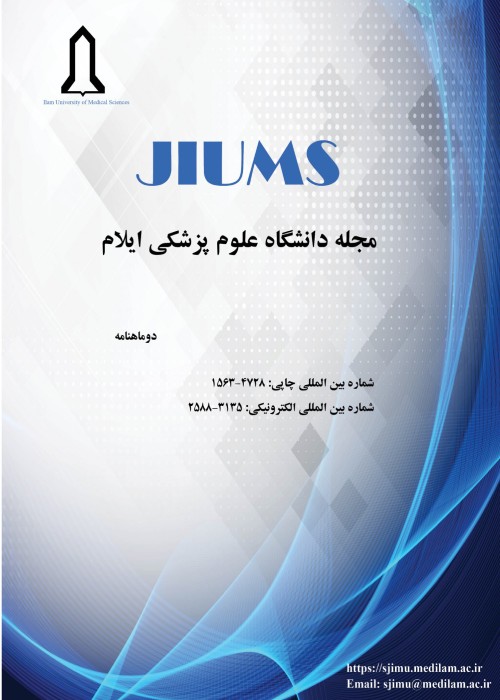Study of type and density of bacteria from Ahvaz air in normal and dusty conditions during different seasons
Author(s):
Abstract:
Introduction
Relation between respiratory problems and presence of air bacteria and fungi has been shown in many studies. Exposure to pollution due to bioaerosols almost is an inevitable feature of urban living throughout the world, and contact with fresh air microorganisms associated with a wide range of harmful effects on health. The present study aimed to study of type and density of isolated bacteria in normal and dusty conditions of different locations and seasons in Ahvaz city. Materials and Methods
The air sampling was conducted by using a microbial air sampler (Quick Take-30, SKC, USA), with a flow rate of 14.3 L/min; placed at (1.5–2 m height) as a representative of human respiratory height. The sampling duration were 15 and 5 minutes at different sampling stations during summer, autumn and winter seasons (Totally 183 samples). Sampling was performed at normal conditions two times a day: morning (9–12) and afternoon (14:00–17:00) for normal and dusty air, respectively. The colonies were cultured in nutrient media and the type and density of microorganisms were detected by staining and viewed by microscope and based on biochemical tests and detection and counting of colonies have been reported in terms of CFU/m3. Findings
Average of total bacterial concentrations for normal and dusty days in ahvaz were 442.34, 889.93 CFU/m3, respectively. The total number of bacteria in dusty days was 2 twice more than normal days. The mean concentrations for Mohit Zist, Naderi, Behdasht Ghadim, and Havashenasi stations were 665.2, 943.4, 657.6, and 437.8 CFU/m3, respectively and the average bacteria concentrations in winter, spring and fall, were observed 760, 84, 515.15 and 479.87 CFU/m3, respectively. In this study, 9 genera of bacteria were isolated including environmental, opportunistic, human body flora and even series of unknown bacteria. Common bacteria in normal and dusty conditions are Bacillus, Streptomyces and Corynebacterium. Among gram-positive bacteria had the highest concentration with more than 89%, and Bacillus species are most abundant genera were isolated from the air in Ahwaz.Discussion & Conclusion
whatever environment has more population density and more traffic, and low vegetation, the concentration of bacteria in environment is high which this concentration of bacteria is inversely related to temperature and UV index of environment. In this study the most important reasons for an increasing in number of bacillus isolated was gram-positive bacteria resistant than drought environment and sporulation in Bacillus which lead to their survival in adverse conditions.Keywords:
Bioaerosol , Bacteria , Dusty days , Ahvaz , Khuzestan
Language:
Persian
Published:
Ilam University of Medical Science, Volume:23 Issue: 3, 2015
Pages:
143 to 152
magiran.com/p1446422
دانلود و مطالعه متن این مقاله با یکی از روشهای زیر امکان پذیر است:
اشتراک شخصی
با عضویت و پرداخت آنلاین حق اشتراک یکساله به مبلغ 1,390,000ريال میتوانید 70 عنوان مطلب دانلود کنید!
اشتراک سازمانی
به کتابخانه دانشگاه یا محل کار خود پیشنهاد کنید تا اشتراک سازمانی این پایگاه را برای دسترسی نامحدود همه کاربران به متن مطالب تهیه نمایند!
توجه!
- حق عضویت دریافتی صرف حمایت از نشریات عضو و نگهداری، تکمیل و توسعه مگیران میشود.
- پرداخت حق اشتراک و دانلود مقالات اجازه بازنشر آن در سایر رسانههای چاپی و دیجیتال را به کاربر نمیدهد.
In order to view content subscription is required
Personal subscription
Subscribe magiran.com for 70 € euros via PayPal and download 70 articles during a year.
Organization subscription
Please contact us to subscribe your university or library for unlimited access!


